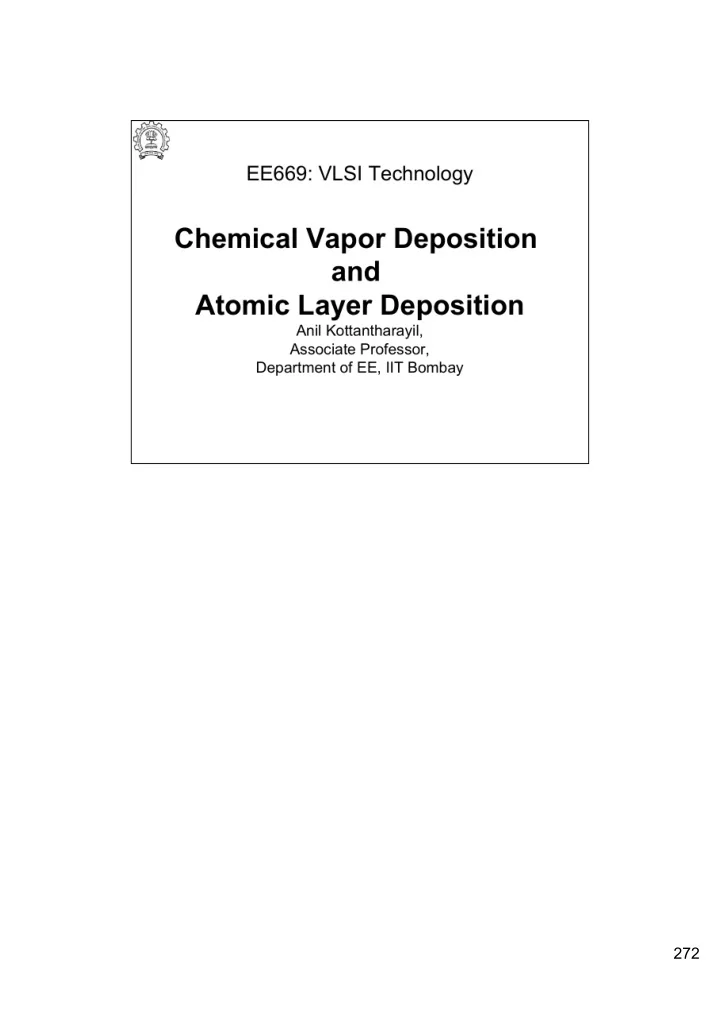

272
273
274
275
276
277
278
Vapor pressure: pressure of a vapor that is in thermodynamic equilibrium with its condensed phase. The condensed phase can be solid or liquid. Partial pressure of a gas in a mixture is the pressure that the gas would have exerted on its own in the absence of other gases. For ideal gases, Dalton’s law states that the total pressure of a mixture of gases P = P1 + P2 + P3 + …., where P1, P2, …. are the partial pressure of the individual gases. 279
Phase diagram of a material is shown on the left. The 2D graph on the right shows the P-T diagram for the material for a fixed volume. This is representative of most of the CVD processes where the volume of the liquid precursor handling system does not vary. Beyond the critical point, the liquid and gas phases cannot be distinguished and the material is a super critical fluid. As a rule of thumb a CVD precursor is required to have a vapor pressure of 7.5 Torr. 280
281
Specific volume is the volume per unit mass. 282
A peristaltic pump , or roller pump, is a type of positive displacement pump used for pumping a variety of fluids. The fluid is contained within a flexible tube fitted inside a circular pump casing (though linear peristaltic pumps have been made). A rotor with a number of "rollers", "shoes" or "wipers" attached to the external circumference compresses the flexible tube. As the rotor turns, the part of tube under compression closes (or "occludes") thus forcing the fluid to be pumped to move through the tube. www.wikipedia.org 283
284
This is more of an experimental laboratory arrangement. For Tungsten CVD in VLSI technology, WF 6 or WCl 6 are used as precursors and they can be bought off the shelf. 285
286
287
288
289
290
The volume density can be calculated from PV = nRT 291
292
293
The development of a boundary layer can be thought of as the balance between two forces. The gas has a velocity along “x”. There is a retarding force acting on the gas due to friction. The friction is caused by the walls of the reactor and propagates through the viscosity of the gas. The boundary layer is a consequence of a sort of balance of these two counter acting forces. The friction due to the walls of the reactor or wafer holders is fixed for a given reactor design and the viscosity of the gas is fixed for a given gas mixture and temperature. Consequently, a higher gas velocity in the main stream would result in a thinner boundary layer. A good analogy may be wind. As you go up in the air, it is always windy. However on the ground, we may not feel the wind, unless the overall wind speed increases. Explanation courtsy, Prof. Amit Aggrawal, Mechanical Engineering. 294
295
296
297
298
299
300
301
302
303
304
305
306
307
308
309
310
311
312
313
314
Recommend
More recommend